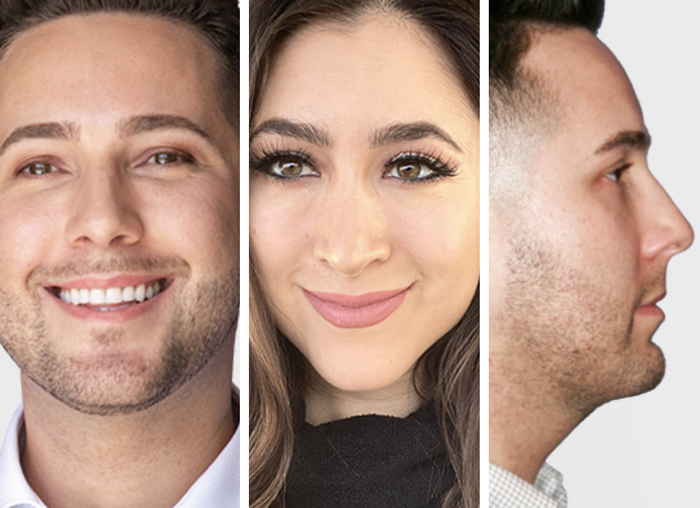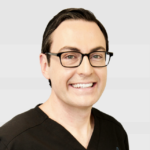A heavy eyebrow region or forehead can be a sign of age but is not always directly related to the aging process. Some people are born with thicker or more pronounced soft tissues of the forehead. Regardless of the cause, a heavy brow can give the appearance of anger, frustration, or sadness – even when you’re feeling great. In addition, the full brow can push down on the upper eyelids, making you look tired or drowsy. (This heaviness on the outside of the eyelid area is called lateral hooding.) Finally, the shadow cast by the brow can detract from the brightness or openness of your eyes, again giving an impression of a mood or attitude which is different than how you feel.
Explore our
Patient Gallery
*Actual patients in photos

Dr. Ransom can address these specific concerns with a minimally-invasive endoscopic browlift (forehead lift). During this procedure, the frown lines in between the eyebrows (glabellar rhytids, also called the “11’s”) can also be addressed – minimizing or eliminating the need for Botox® Cosmetic treatments to this region! With an endoscopic browlift, all of the incisions are placed behind the hairline – so that they leave no visible scars! Dr. Ransom uses these hidden access points to lift the soft tissues of the forehead and eyebrow region, while carefully maintaining the normal orientation of the eyebrow and ensuring natural-appearing rejuvenation.
The endoscopic browlift can be combined with other facial rejuvenation procedures and is particularly effective when the eyelids are addressed at the same time (with an upper eyelid and/or lower eyelid lift). Please visit the photo gallery for some examples.
Who is a candidate?
Anyone with a heavy brow, deep glabellar rhytids (the “11’s” between the eyebrows), and particularly patients with lateral hooding of the upper eyelids (see above). Special consideration is needed for men who are bald or have significantly receding hairlines; in some cases, a different approach is needed (please see Forehead Lift page). Upper eyelid ptosis (upper lids do not open all the way) should not be confused with lateral hooding; this issue has to do with the muscles that retract the upper eyelid, rather than excess eyelid skin or a heavy brow region. Comprehensive rejuvenation of the entire forehead, brow, and eyelid complex can be discussed with Dr. Ransom at your consultation.
Frequently Asked Questions
Please note that all patients are different and individual healing times and results may vary. The statements regarding procedures and recovery made here are general rules.
For the first night after the procedure, patients wear a soft cotton dressing. Bruising and swelling peak on day two, and then decrease steadily. This typically takes about a week, but may be faster for some patients. All incisions are placed behind the hairline, so these are not visible after healing has occurred. Sutures are removed a week after the procedure. Keeping the head elevated is helpful for the first few days.
Having a browlift will not change the shape of the eyes. In the first few days after surgery, when the area is still swollen, the eyes will look puffy and it may be difficult to see their exact shape. However, after healing, the desired effect of a browlift is seen – a more open appearance of the eyes, from elevation of the heavy brow tissue, and a smoother forehead contour.
Yes, an endoscopic browlift is a great option for patients with receding hair or a high hairline. This procedure uses small incisions placed in the temple region and in the midline above the hairline. The procedure is then completed using an endocope (a lighted camera) from underneath the skin. These incisions heal very well and within a few weeks, there is generally no evidence of the procedure on the surface. For some patients with a high hairline, another option is the hairline lowering surgery.
Dr. Evan Ransom is an Ivy League-educated and Ivy League trained Facial Plastic and Reconstructive Surgeon. He is a Double Board Certified Head and Neck Surgeon and Facial Plastic and Reconstructive Surgery and fellowship-trained in facial plastic, reconstructive, and laser surgery. His practice is in the San Francisco Bay Area, serving patients from San Francisco, Oakland, Marin County, Palo Alto, Silicon Valley, Walnut Creek, the East Bay, and all over Northern California.
 (415) 550-1077
(415) 550-1077 San Francisco
San Francisco




